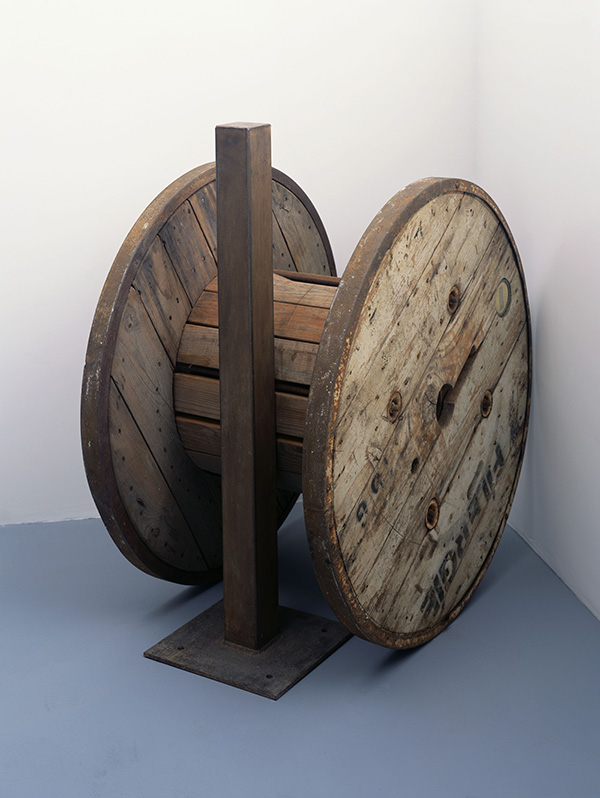ART-PRESENTATION: Lucia Nogueira
 Before her death Lucia Nogueira had become one of the most individual voices in sculpture in the U.K. She would walk around London collecting discarded, broken and unwanted items. Back in her studio she would play with their positioning and the relationships between objects, negotiating their status to create lively, humourous and disturbing works.
Before her death Lucia Nogueira had become one of the most individual voices in sculpture in the U.K. She would walk around London collecting discarded, broken and unwanted items. Back in her studio she would play with their positioning and the relationships between objects, negotiating their status to create lively, humourous and disturbing works.
By Dimitris Lempesis
Photo: Anthony Reynolds Gallery
An exhibition of her works is on presentation at Annely Juda Fine Art with the collaboration of Anthony Reynolds Gallery. Lucia Nogueira had an extraordinary eye for the potential of the apparently least promising discovery and her ability to place objects in significant conversation with spaces was uncanny. A fascination with the structure of language infiltrated her titles but also expressed the particular force of her bilingual ambivalence. While her career as a sculptor was conducted in London, she described how her practice derived from her Brazilian background: “My way of thinking is very much from Brazil: my way of picking up objects comes from there too. It is something connected with childhood and also with the Brazilian psyche. Our way of thinking is not as linear as it is in Europe. . . . In art you obviously have a background in art history that is very rich. We don’t have that in Brazil at all. I think the way we developed our visual sense is different from the European model.” The body was a very important subject in art spanning the late 80s into the early ‘90s, due in part to the reaction against the highly commercialized art in America at that time. Many of Noguerias contemporaries (Antony Gormley, Helen Chadwick, Cathy De Monchaux, Rachel Whiteread) were exploring how they could use their own bodies as inspiration and how the body reacts and interacts with objects around us. The body is often alluded to in her work and viewing it can be like encountering another individual and leaves us feeling unable to second-guess how they will behave. Her sculpture offers us specific opportunities for encountering, comprehending and registering uncertainties. Like entering a room and finding someone asleep, her sculptures are states of rest filled with the latent possibility of further change, and this makes her work intriguing, appealing and unsettling. Her placement of objects in the gallery allows her to create emotionally complex relationships between objects and between objects and viewer. With the sculpture “Full Stop”, the objects are too obviously placed, too mischievous, to be accidental, almost a booby-trap. Nogueira’s art eludes classification. Despite frequently suggesting a Brazilian sensibility, for example in the frequent use of dried black beans as capsules of energy, it does not sit comfortably within the paradigm of most Brazilian art, but neither does it reflect what was taking place in London at the time. It is suspended in a complex cultural partnership and expresses relationships that are at the root of our attempts to negotiate experience.
Info: Annely Juda Fine Art, 4th Floor, 23 Dering Street, London, Duration: 23/9-29/10/16, Days & Hours: Mon-Fri 10:00-18:00, Sat 11:00-17:00, www.annelyjudafineart.co.uk & www.anthonyreynolds.com



